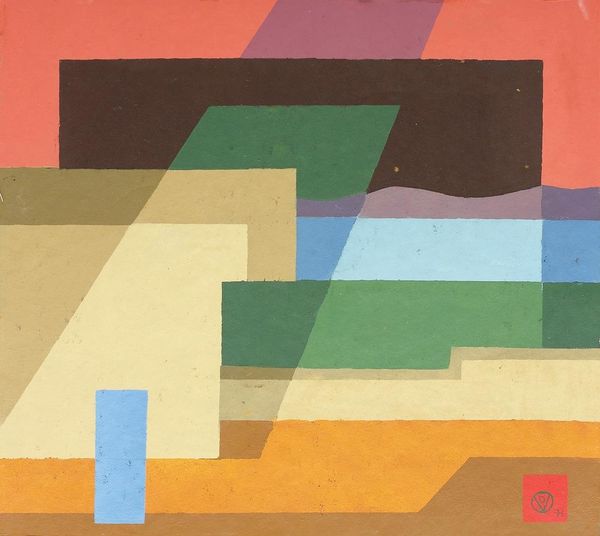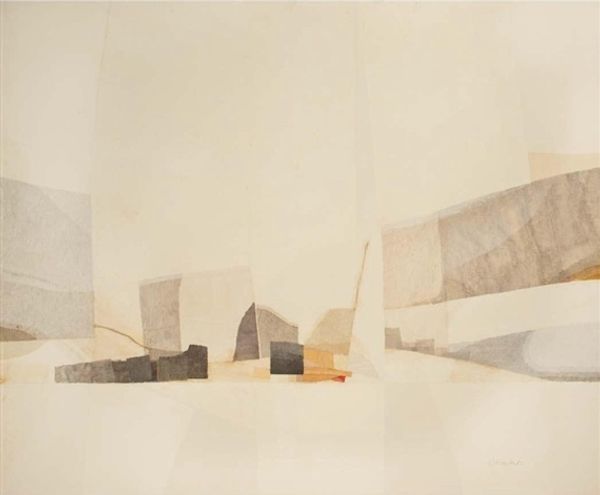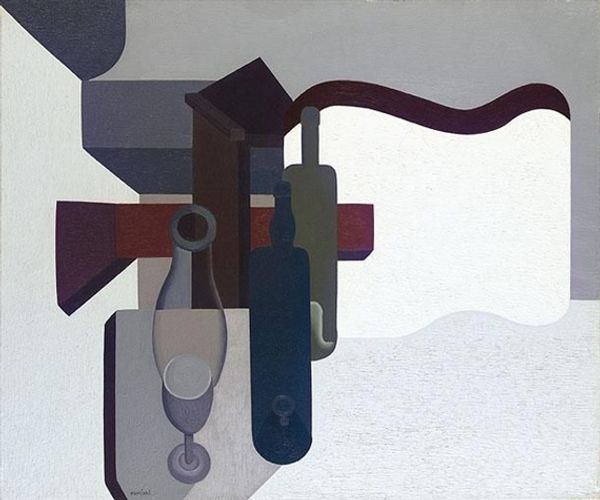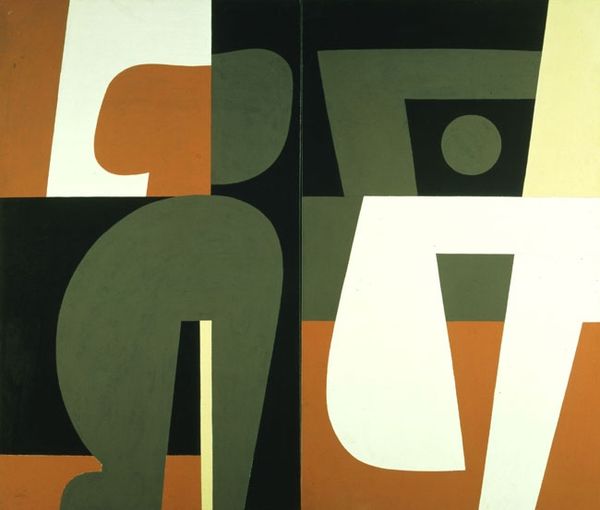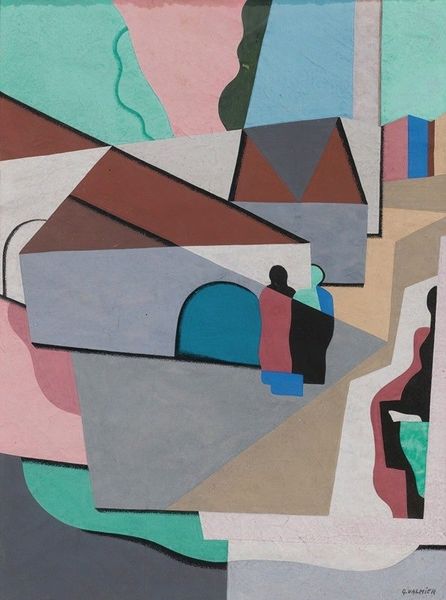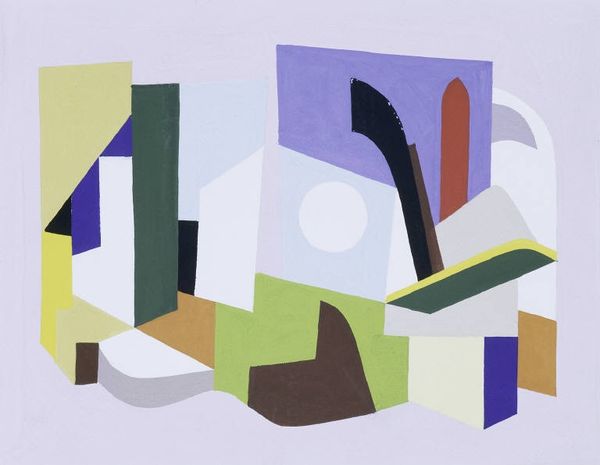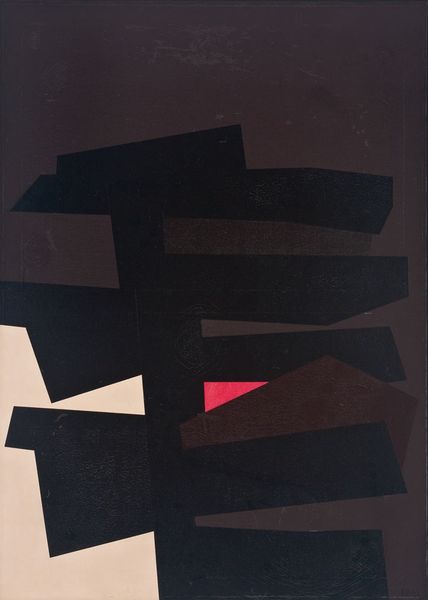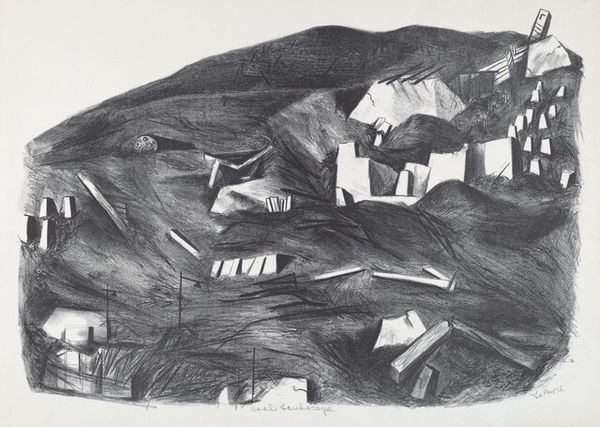
painting
#
purism
#
painting
#
geometric
#
abstraction
#
cityscape
Copyright: Amedee Ozenfant,Fair Use
Editor: We're looking at "Sisteron" by Amédée Ozenfant, a painting marked by its geometric style and shades of terracotta. It reminds me of adobe architecture. How would you interpret this abstracted cityscape? Curator: Considering the Purist movement Ozenfant co-founded, it's vital to see this as a reaction against the excesses of Cubism and its perceived elitism. He wanted to create art accessible to a wider public. Does the simplicity of form and limited palette strike you as particularly "democratic," perhaps even "anti-establishment," when considering art world norms of the time? Editor: I hadn't thought of it that way. So, the stark forms aren’t just about aesthetics, but a conscious choice to avoid complex artistic statements? Curator: Precisely! It is also a rejection of subjective expression. Ozenfant sought universal, rational beauty. Think of the social climate post-World War I; there was a collective desire for order and clarity. This painting embodies that spirit in its reductive forms and structured composition, almost like a utopian vision of urban planning. Editor: I see! It's like he’s saying, "let's rebuild with simple, fundamental forms." The political context makes the abstraction feel less cold. Curator: Indeed! And Ozenfant wasn't just advocating for artistic change, but social change. His influence extended beyond the canvas, impacting design and architecture as well. In this work, he implies a social vision. Do you get the feeling of control? How did this image appear during times of reconstruction? Editor: Definitely! I see this piece as much more than an image; it’s a statement! I appreciate your explanation. Curator: And I find that fresh eyes allow me to reflect on Ozenfant’s historical context, thinking on whether the ideal he strived for could really exist.
Comments
No comments
Be the first to comment and join the conversation on the ultimate creative platform.
